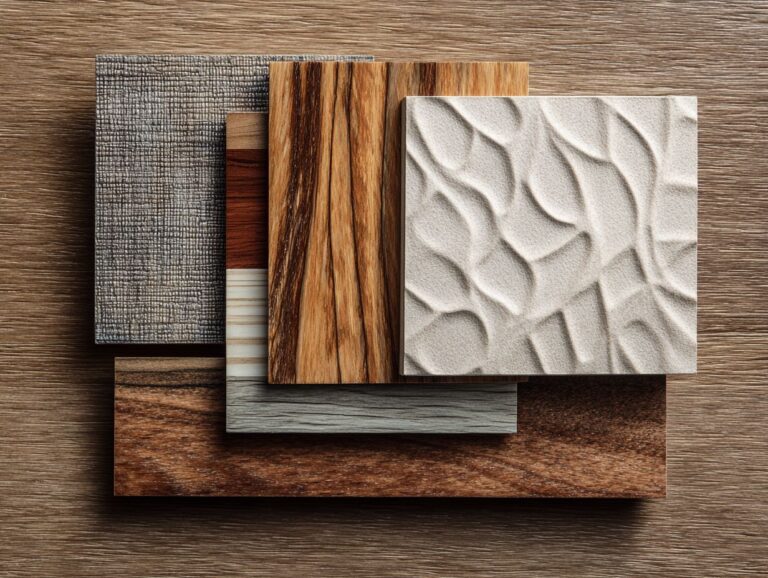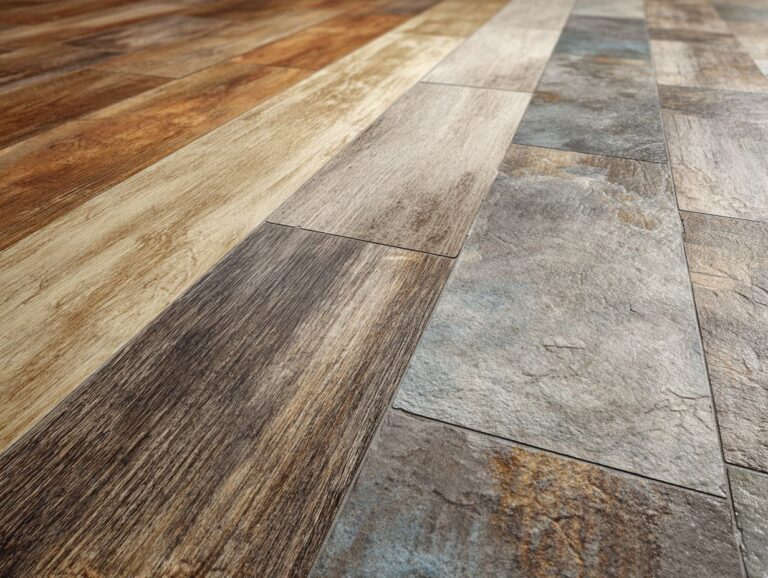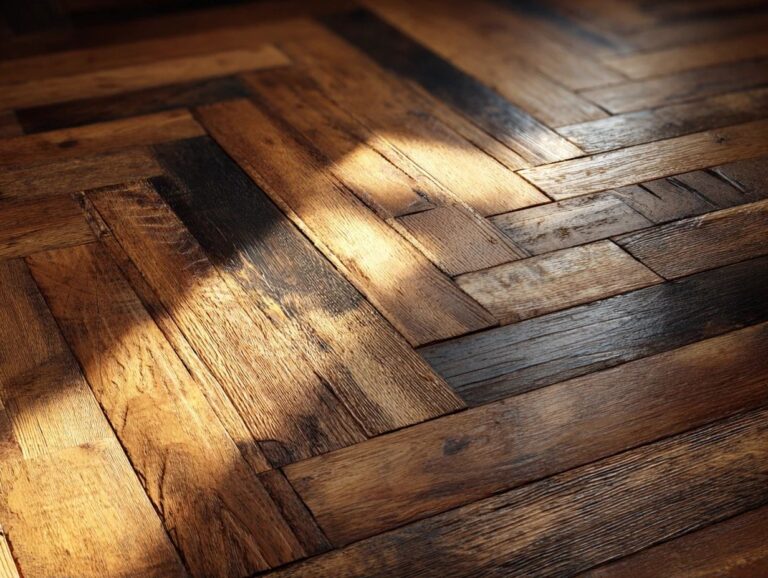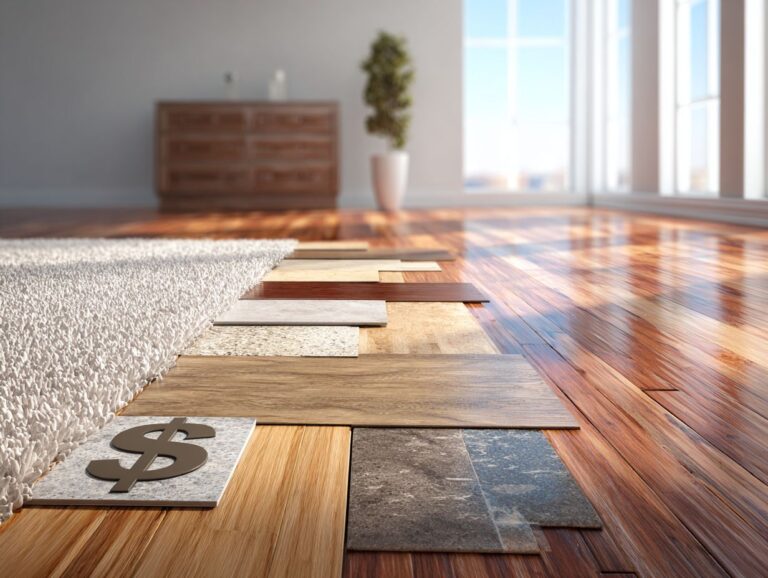Pet-Safe Floor Cleaning Products and Methods
Keeping your home clean shouldn’t come at the expense of your pet’s safety. This guide on floor cleaning products safe for pets looks at natural cleaners that won’t harm pets, do-it-yourself cleaning options safe for pets, and key ingredients in cleaning products that avoid dangerous chemicals. Experts like Toby Schulz and brands such as Maid2Match and Better Life emphasize the importance of safe cleaning methods. Learn how to choose the best products and create a healthier environment for both you and your furry friends.
Key Takeaways:
Contents
- Understanding Pet-Safe Ingredients
- Homemade Pet-Safe Cleaning Solutions
- Commercial Pet-Safe Cleaning Products
- Pet-Safe Cleaning Products Market Statistics (2025 to 2035)
- Cleaning Methods for Pet Owners
- Specific Floor Types and Safe Cleaning Techniques
- Frequently Asked Questions
- What are pet-safe floor cleaning products?
- Why is it important to use pet-safe floor cleaning products?
- What ingredients should I look for in pet-safe floor cleaning products?
- Can I use pet-safe floor cleaning products on all types of flooring?
- Are there any homemade pet-safe floor cleaning methods I can use?
- Are there any pet-safe floor cleaning products that can help prevent pet accidents on the floor?
Importance of Pet Safety
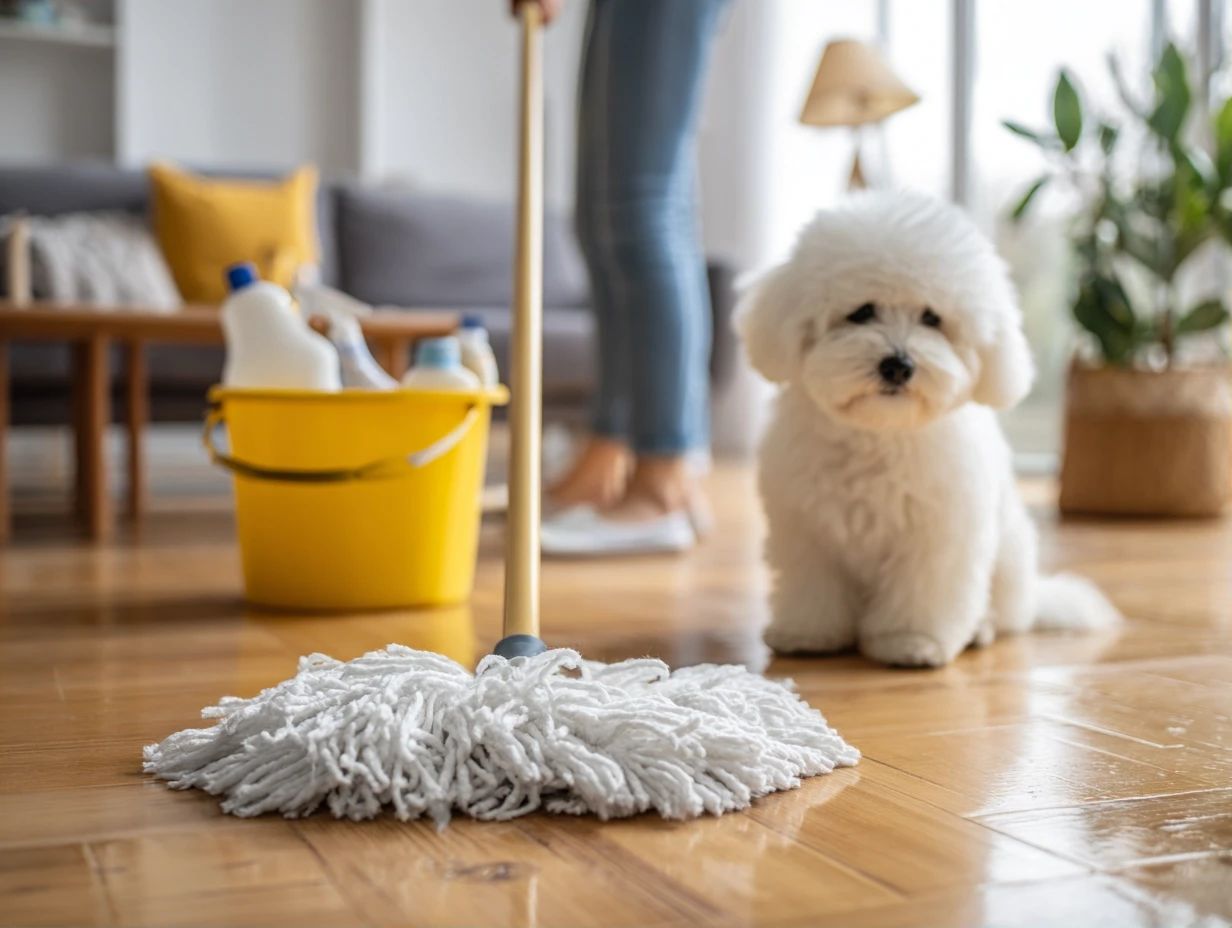
Ensuring our cleaning regimens are safe for pets can prevent health issues, with over 200,000 cases of pet poisoning reported annually due to household products.
To keep your pets safe, choose cleaning products that are harmless, such as vinegar, baking soda, or unscented castile soap. For instance, using a vinegar and water solution can effectively clean surfaces without harmful chemicals.
Always store cleaning products where pets cannot access them, and check labels to confirm they are safe for animals. A real story shows what can happen: a dog named Max had serious stomach problems after swallowing a common household cleaner. This made his owner decide to use homemade cleaning products instead.
Implement these strategies to create a safer cleaning environment for your furry friends.
Common Household Cleaning Products and Their Risks
Common cleaning products, like bleach and those with ammonia, can be dangerous for pets. They might cause breathing problems and skin rashes.
For a safer environment, try using different options for regular cleaning jobs.
For example, replace traditional glass cleaners containing ammonia with a solution of equal parts vinegar and water.
Baking soda works well as a scrubbing cleaner for kitchens and bathrooms. Lemon juice helps get rid of odors and cleans surfaces.
Using essential oils such as tea tree or lavender can offer antimicrobial properties without harmful effects. Transitioning to these natural products protects pets and creates a healthier home atmosphere. If you’re interested in more eco-friendly cleaning methods, explore our Green Cleaning Solutions for All Flooring Types to enhance your approach.
Understanding Pet-Safe Ingredients
Knowing which ingredients are safe for pets helps people select cleaning products wisely, lowering the risk of pets encountering dangerous substances.
Natural Ingredients
Natural ingredients like vinegar, baking soda, and hydrogen peroxide are safe cleaning options that do not harm pets.
Vinegar works well as a deodorizer and stain remover. For example, a simple mixture of equal parts vinegar and water can clean windows and countertops effectively.
Baking soda is a powerful cleaner. Spread it on areas like sinks or bathtubs and scrub with a wet cloth to make them sparkle.
Hydrogen peroxide is excellent for disinfecting; a solution of 1 part hydrogen peroxide to 2 parts water can be used on cutting boards and bathroom surfaces.
These ingredients clean well and are safe for homes with pets.
Essential Oils and Their Effects
Even though essential oils can smell nice and kill germs, some oils can harm pets, so you must choose them carefully.
When selecting pet-safe essential oils, consider these options:
- lavender
- chamomile
- lemon oil
which are generally safe and can help soothe your pet. Alternatively, avoid oils such as:
- tea tree
- eucalyptus
- citrus oils
as they can be harmful. To safely use essential oils in cleaning products, dilute them with a carrier oil or water-usually around 1-2 drops of essential oil per tablespoon of carrier. Test a small spot first, and make sure your pets are not in the area while applying the product to protect them.
Safe vs. Toxic Ingredients
Knowing which ingredients are safe or harmful is important. For example, items without phosphates and surfactants are usually safe for pets.
To keep household products safe, look at these points:
- Look for ingredients like citric acid, a natural preservative and cleaning agent, and sodium bicarbonate, which is effective at neutralizing odors.
- Avoid glycol ethers, linked to reproductive and developmental harm, and benzalkonium chloride, a skin irritant.
Checking labels and using apps like Think Dirty can simplify the identification process, allowing for a more informed purchase.
Writing down your preferred ingredients allows you to learn about them and make safer decisions for your household and animals.
Homemade Pet-Safe Cleaning Solutions
Creating cleaning products at home protects pets, reduces expenses, and is eco-friendly.
Vinegar and Water Solution
A mixture of vinegar and water is an effective and pet-safe cleaner for various surfaces, combating odors and stains without harmful residues.
To prepare this solution, mix equal parts vinegar and water in a spray bottle. This 1:1 ratio works well on glass, kitchen counters, and appliances, ensuring a streak-free finish.
Avoid using it on natural stone surfaces like granite or marble, as vinegar’s acidity can damage their finish.
For tougher stains, let the mixture sit for a few minutes before wiping with a microfiber cloth to absorb odors and lift grime effectively.
Baking Soda for Odor Elimination
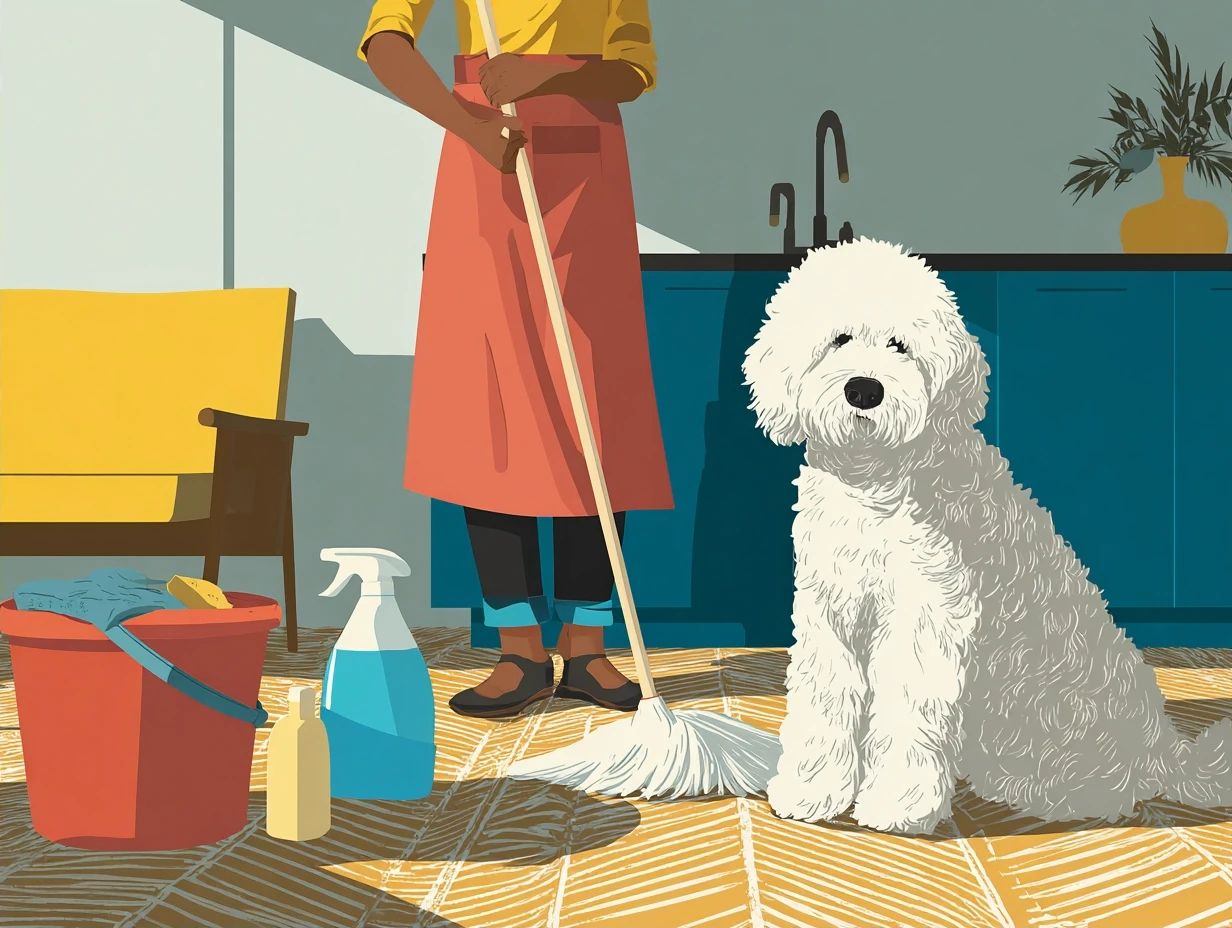
Baking soda can safely get rid of odors in carpets and fabrics, and it won’t harm pets.
To clean with baking soda, sprinkle it generously on the carpet or fabric you want to clean and let it sit for at least 15-30 minutes.
To deal with strong odors, combine baking soda and some water to make a paste. Spread it on the spot, let it dry fully, then vacuum. This process can improve its ability to remove odors, especially for tough stains or lingering smells.
Test a small hidden spot first to make sure the fabric responds well to the application.
Castile Soap for General Cleaning
Castile soap is a gentle, biodegradable cleaner that works well on many surfaces, providing a safe cleaning option for those with pets.
To maximize its cleaning potential, dilute Castile soap based on the task at hand.
- For general cleaning, mix 1 part soap with 10 parts water.
- For tougher grease, increase the ratio to 1:5.
- Use 1-2 tablespoons in a gallon of water for laundry – it’s gentle yet effective.
- For pet areas, a solution of 1:30 (soap to water) is adequate.
These measurements keep your home clean using safe materials, making it suitable for families and pets.
Commercial Pet-Safe Cleaning Products
When choosing commercial products, pet owners should check that the labels say “pet-safe” to prevent accidental harm to their pets.
Pet-Safe Cleaning Products Market Statistics (2025 to 2035)
Pet-Safe Cleaning Products Market Statistics (2025 to 2035)
Market Growth Metrics: Market Projections
Regional Growth Trends: CAGR by Region 2025 to 2035
The Pet-Safe Cleaning Products Market Statistics from 2025 to 2035 highlights the anticipated growth and regional trends within this increasingly relevant market. The growing awareness of pet health and safety among consumers is fueling demand for cleaning products that are non-toxic and safe for animals.
Market Growth Metrics show a positive trend, with the market size expected to increase from $6.492 billion in 2025 to $8.310 billion in 2035. This represents a compound annual growth rate (CAGR) of 2.5%. The steady growth reflects increasing consumer preference for eco-friendly and pet-safe products, driven by heightened awareness of the harmful effects traditional cleaning agents can have on pets.
Regional Growth Trends present varying growth rates across different regions. The USA leads with a CAGR of 2.7%, likely due to a larger pet-owning demographic and higher disposable incomes, which allow for premium product purchases. Japan follows closely with a 2.5% CAGR, while the UK and South Korea are both projected to grow at 2.4%. The EU shows a slightly lower but steady growth at 2.3%, indicating a balanced demand across its member countries.
Market Share Analysis shows how top companies compete with each other. The Honest Company, Inc. captures the largest market share at 20%, suggesting strong brand recognition and consumer trust. Seventh Generation, Inc. holds 16%, followed by Puracy with 14%. ECOS Earth Friendly Products and Natures Miracle Spectrum Brands have market shares of 12% and 10%, respectively. The remaining 29% is distributed among other smaller players, illustrating a diverse market with opportunities for emerging brands.
In general, the data shows a strong market prediction for pet-safe cleaning products, fueled by growing consumer awareness and desire for safer products at home. Companies leading in market share are those that have successfully aligned their products with consumer values, focusing on safety, transparency, and ecological impact.
Criteria for Choosing Safe Products
Choosing the right cleaning products requires careful attention to labels, ensuring they are free from harmful ingredients like bleach and phthalates.
To keep things safe, think about these points:
- First, look for certifications like Green Seal or EPA Safer Choice, which indicate environmentally friendly practices.
- Second, read ingredient lists thoroughly; avoid products with artificial fragrances, which can contain allergens.
- Third, prioritize products containing biodegradable components, as they break down safely in the environment.
- Fourth, assess packaging for recyclability; sustainable packaging reduces waste.
Research the brand’s transparency and values; reputable companies often provide detailed information about their ingredients and sustainability efforts.
Recommended Brands
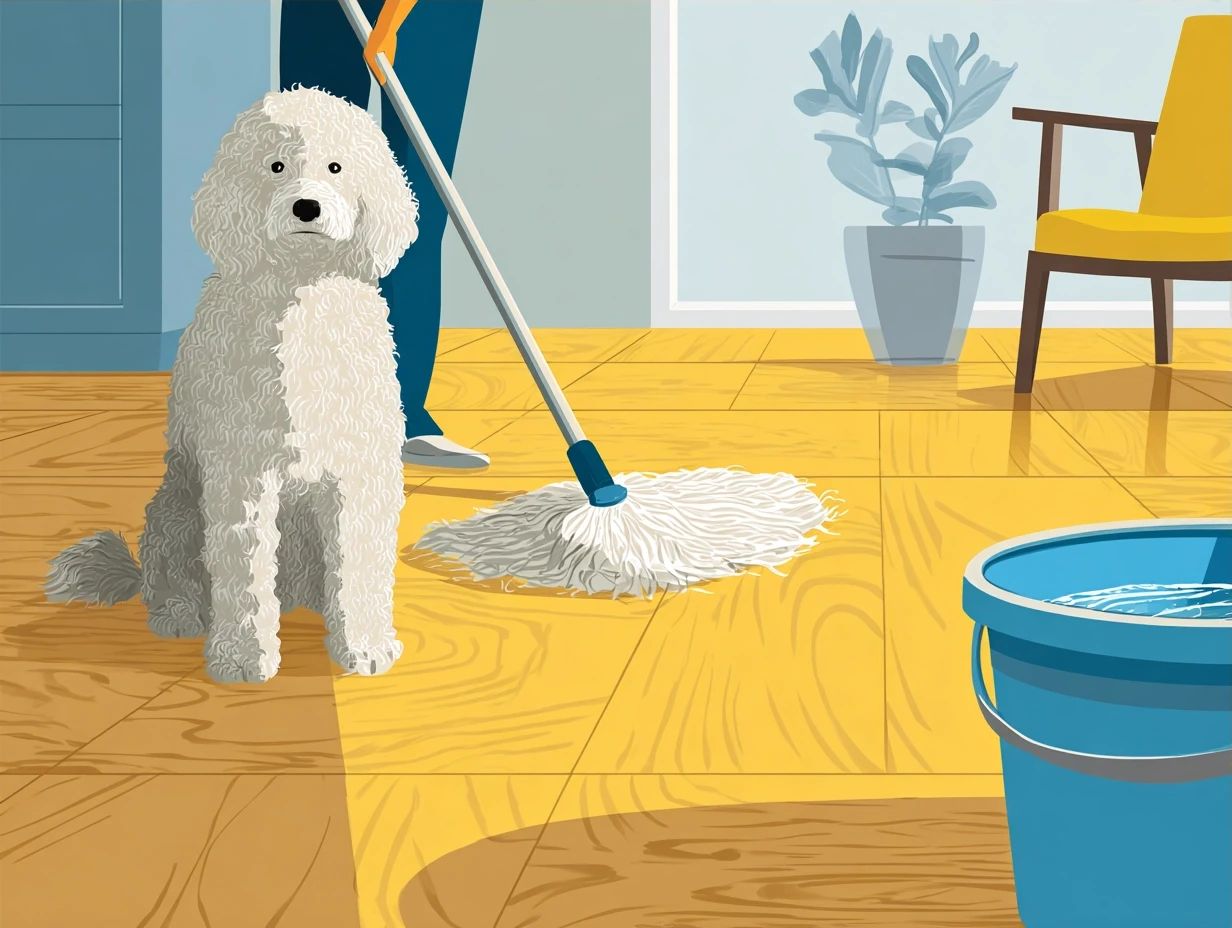
Several brands prioritize pet safety, with products like Better Life and Method Cleaning Spray offering cleaning solutions that are free from harmful chemicals.
Additional pet-safe brands include:
- Seventh Generation: Known for its plant-based ingredients and biodegradable formulas, it’s effective against common stains and can be found at major retailers like Target.
- Mrs. Meyer’s Clean Day: Offers a variety of naturally derived cleaners with essential oils, available at grocery stores.
- Eco-Store: This brand focuses on low-impact products free of harsh chemicals; its cleaners are available online.
These brands keep your home clean and safe for your pets by avoiding harmful chemicals.
Label Reading: What to Look For
Knowing how to read cleaning product labels can help pet owners stay away from harmful chemicals in store-bought cleaners.
Start by looking for terms like “fragrance,” which can often indicate the presence of harmful synthetic chemicals. Opt for products labeled as “non-toxic” or “biodegradable,” but verify these claims through third-party certifications like Green Seal.
Avoid ingredients such as bleach, ammonia, and phthalates-they can pose significant health risks to pets. Familiarize yourself with common hazardous symbols like the skull and crossbones, which signal caution.
By adopting these strategies, pet owners can create a safer environment for their furry companions.
Cleaning Methods for Pet Owners
Using effective cleaning methods designed for pet owners can make your home cleaner and keep your pets safe. Related insight: explore our best flooring cleaning products by material type to ensure you’re using pet-safe materials.
Best Practices for Floor Cleaning
For pet owners, using pet-safe cleaning methods is essential, especially when cleaning floors that pets frequently access.
To effectively clean various floor types while ensuring your pet’s safety, consider these best practices.
- For hardwood floors, use a mixture of vinegar and water to remove dirt without damaging the finish; clean bi-weekly.
- Cleaning tile floors with a mix of baking soda and warm water works very well. You can do this each week.
- As for carpets, opt for enzyme-based cleaners that eliminate pet odors. Sprinkle baking soda on carpets before vacuuming to improve their smell.
Always rinse thoroughly and dry the floor to prevent slips, ensuring a safe environment for your furry companions.
Spot Cleaning vs. Deep Cleaning
Knowing when to do a quick clean or a thorough clean helps pet owners keep their home clean and safe.
Spot cleaning is ideal for immediate issues, like cleaning up pet accidents using products such as Nature’s Miracle Stain & Odor Remover, while deep cleaning targets accumulated dirt and allergens.
For a deep clean, consider steam cleaning carpets or using a HEPA vacuum. Regular deep cleaning involves thoroughly cleaning each room every few months, while you should clean up spills or messes right away.
Set up a routine that includes both quick daily checks and thorough monthly cleaning to create the best living area for pets and their owners.
Frequency of Cleaning
Sticking to a regular cleaning routine is important for pet owners to reduce smells and allergens from pets.
To effectively manage cleaning, designate specific frequencies for different areas.
For instance, clean pet bedding and food bowls daily to prevent buildup of bacteria. Vacuum high-traffic areas weekly to pick up hair and dander, and do a thorough carpet cleaning monthly to get rid of allergens completely.
Create a visual cleaning chart to track tasks, assigning each family member duties to share the workload. This promotes tidiness and teamwork, simplifying the process.
Specific Floor Types and Safe Cleaning Techniques
Different floor types need special cleaning methods to keep them safe and effective for homes with pets. For instance, using the right cleaning products can make a significant difference-our guide on best flooring cleaning products by material type elaborates on the most suitable options for different materials.
Hardwood Floors
Cleaning hardwood floors requires a gentle touch, as harsh chemicals can damage the finish and pose risks to pets.
To maintain your hardwood floors, consider using a gentle cleaning method, such as the Bona Hard-Surface Floor Cleaner or a homemade solution of equal parts vinegar and water.
Clean your floors every two weeks to prevent dirt buildup. Use a slightly damp mop to avoid water damage.
Put pads under your furniture to prevent scratches and add a protective coating every 3-5 years, depending on how often you use the area.
Regularly sweeping or vacuuming can also preserve the finish and keep your floors looking their best.
Tile and Grout
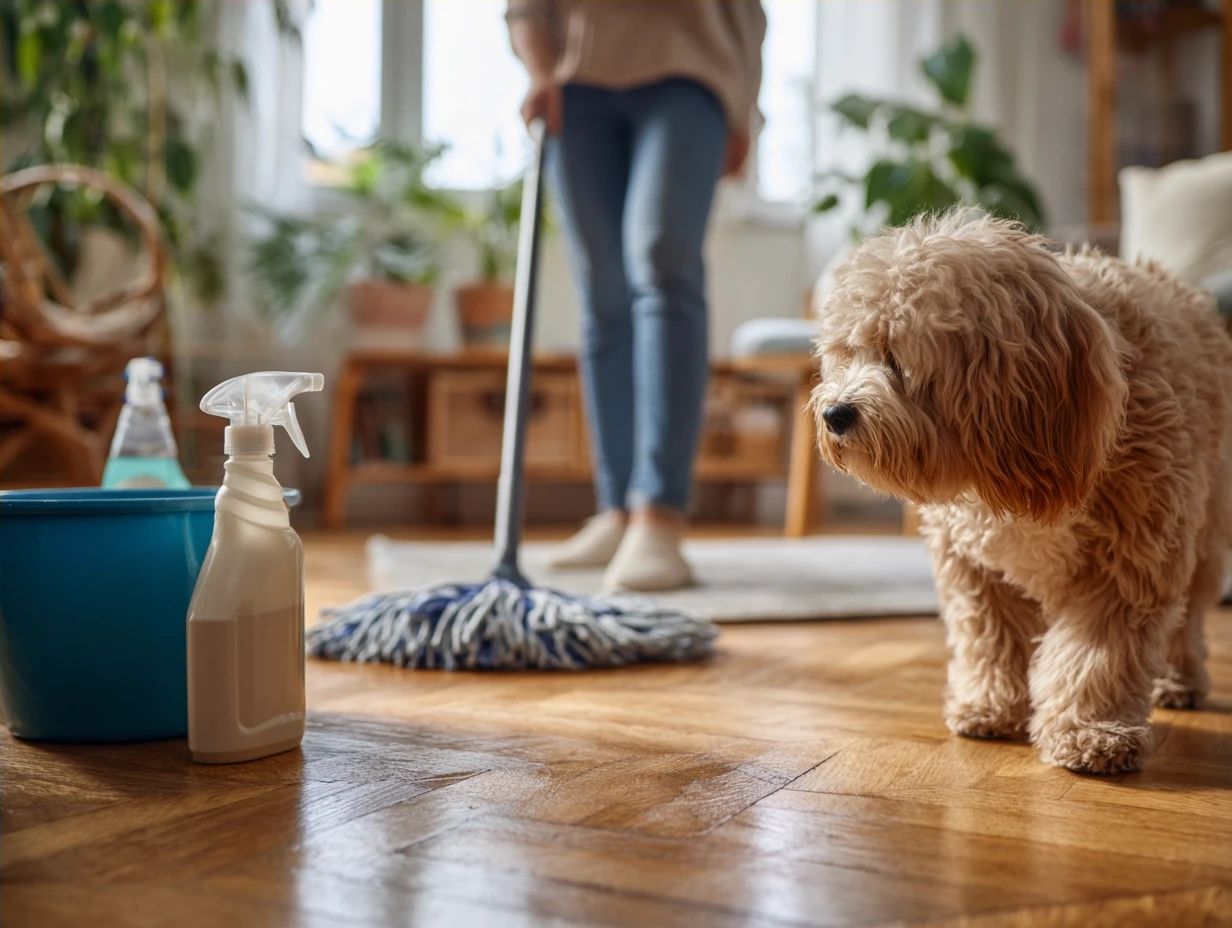
For tile and grout, regular cleaning is essential to prevent buildup and maintain a safe environment for pets.
Try to clean tile and grout at least once a month using products safe for pets, like Method All-Purpose Cleaner or Better Life Natural All-Purpose Cleaner.
For DIY enthusiasts, a mixture of equal parts vinegar and water can effectively tackle grime while being safe for pets. Regular sweeping or vacuuming helps prevent dirt accumulation between deep cleans.
Consider applying a tile sealer every 6-12 months to protect grout from stains and bacteria. This new method keeps surfaces clean and creates a healthier space for your pets.
Carpets and Rugs
Carpets and rugs can trap odors and allergens, necessitating specific cleaning methods that are safe for pets.
To keep carpets fresh, vacuum at least once a week and consider using a pet-safe carpet cleaner when needed.
To get rid of smells, sprinkle baking soda on the carpet, wait 15 minutes, and then vacuum it.
For stains, blot the affected area with a mixture of equal parts vinegar and water, avoiding scrubbing to prevent damage.
Schedule professional cleanings every 6-12 months to remove trapped dirt and allergens, making the environment safer for your pets.
Final Tips for Pet-Safe Cleaning
Using these last cleaning tips can improve the safety and comfort of pets and keep your home clean.
- Start by switching your cleaning products. Choose options safe for pets like vinegar and baking soda, and avoid harsh chemicals. Always keep pets in a separate room during cleaning to prevent exposure to fumes or irritants.
- Check labels closely and choose products with pet-safe certifications to make sure they are safe for your pets. Establish a routine: clean one area per week to avoid overwhelming yourself and maintain a consistent environment.
- Store supplies out of reach to prevent accidental ingestion, ensuring a safer space for your furry friends.
Frequently Asked Questions
What are pet-safe floor cleaning products?
Pet-safe floor cleaning products are cleaning solutions that are specifically designed to be safe for use around pets. These products do not contain any harmful chemicals or ingredients that could potentially harm or irritate your furry friends.
Why is it important to use pet-safe floor cleaning products?
Use floor cleaning products that are safe for pets to keep your animals healthy and unharmed. Regular household cleaning products can contain harsh chemicals that can be toxic to animals if ingested or come into contact with their skin. Using pet-safe products eliminates this risk and provides a safer environment for your pets.
What ingredients should I look for in pet-safe floor cleaning products?
When picking floor cleaners safe for pets, choose those with natural and harmless components like vinegar, baking soda, and essential oils. These ingredients are safe for pets and are effective in cleaning and deodorizing your floors.
Can I use pet-safe floor cleaning products on all types of flooring?
Most pet-safe floor cleaning products are safe to use on all types of flooring, including hardwood, laminate, tile, and vinyl. However, always read the instructions and try it on a hidden spot first to make sure it works with your flooring.
Are there any homemade pet-safe floor cleaning methods I can use?
Yes, you can make your own cleaning solutions for floors that are safe for pets. Some common choices are combining equal amounts of water and vinegar, or mixing baking soda, water, and lemon essential oil. These methods are safe, natural, and effective at cleaning and deodorizing your floors.
Are there any pet-safe floor cleaning products that can help prevent pet accidents on the floor?
Yes, there are pet-safe floor cleaning products that can help prevent pet accidents on the floor. These products contain enzymes that break down pet urine and eliminate odors, as well as deter pets from returning to the same spot. Look for products specifically labeled as “pet stain and odor removers” for this purpose.
